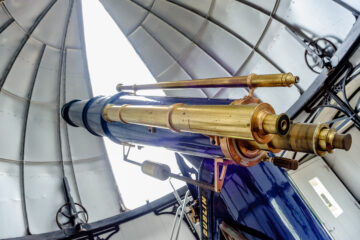The answer is possibly, after an international team of astronomers announced the discovery of a rare molecule, phosphine, in the clouds of Venus.
Phosphine, which is a molecule made up of one phosphorus atom and three hydrogen atoms, is a gas only made industrially on Earth or by microbes that thrive in oxygen-free environments such as swamps or in the guts of animals like penguins. This has led researchers, led by Professor Jane Greaves of Cardiff University, to suggest that it could point to extra-terrestrial ‘aerial’ life as we know there are no industrial factories on Venus nor animals like penguins.

JAXA / ISAS / Akatsuki Project Team
Venus is a very inhospitable planet and has certainly not been considered for harbouring life before given that 96% of the atmosphere is made up of carbon dioxide and it is the hottest planet in the Solar System with a runaway greenhouse effect. In fact surface temperatures are as hot as an oven at over 400 degrees Celsius, so the clouds could indeed be the best place for potential life. But, although the high clouds of Venus have temperatures up to a pleasant 30 degrees Celsius, they are incredibly acidic – around 90% sulphuric acid. This poses major issues for microbes to survive there.
MIT team-member, Dr Clara Sousa Silva explains “The discovery raises many questions, such as how any organisms could survive. On Earth, some microbes can cope with up to about 5% of acid in their environment – but the clouds of Venus are almost entirely made of acid.”

Will Montgomerie / EAO / JCMT
The team believes their discovery is significant because they can rule out many alternative ways to make phosphine, but they acknowledge that confirming the presence of “life” needs a lot more work as they now eagerly await more telescope time to establish whether the phosphine is in a relatively temperate part of the clouds, and to look for other gases associated with life. New space missions could also travel to our neighbouring planet, and sample the clouds in situ to further search for signs of life.
Director of Armagh Observatory and Planetarium, Professor Michael Burton said the it was a “fascinating discovery which will undoubtedly drive new science as we try and discover why phosphine is there in the cloud of Venus, and if indeed biological processes are responsible, or some entirely natural processes we haven’t yet thought of. It also shows the power of new telescopes to discover the unexpected, to find things that weren’t originally sought for, to open up new directions and new knowledge.”

ESO / M. Kornmesser / L. Calçada & NASA / JPL / Caltech
There does need to be more investigation, but it is an exciting development of a possible sign of life for which we have no plausible alternative explanation.



0 Comments